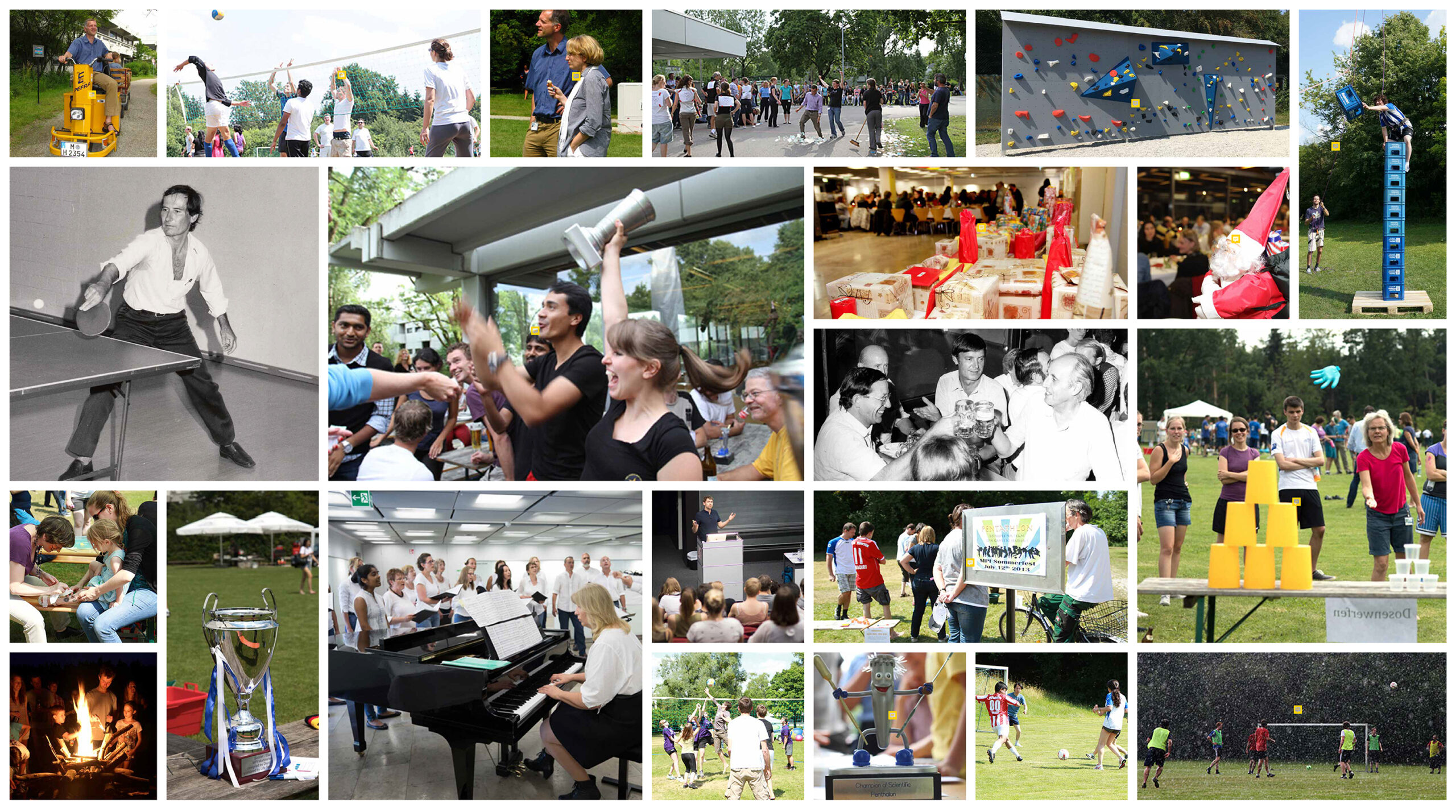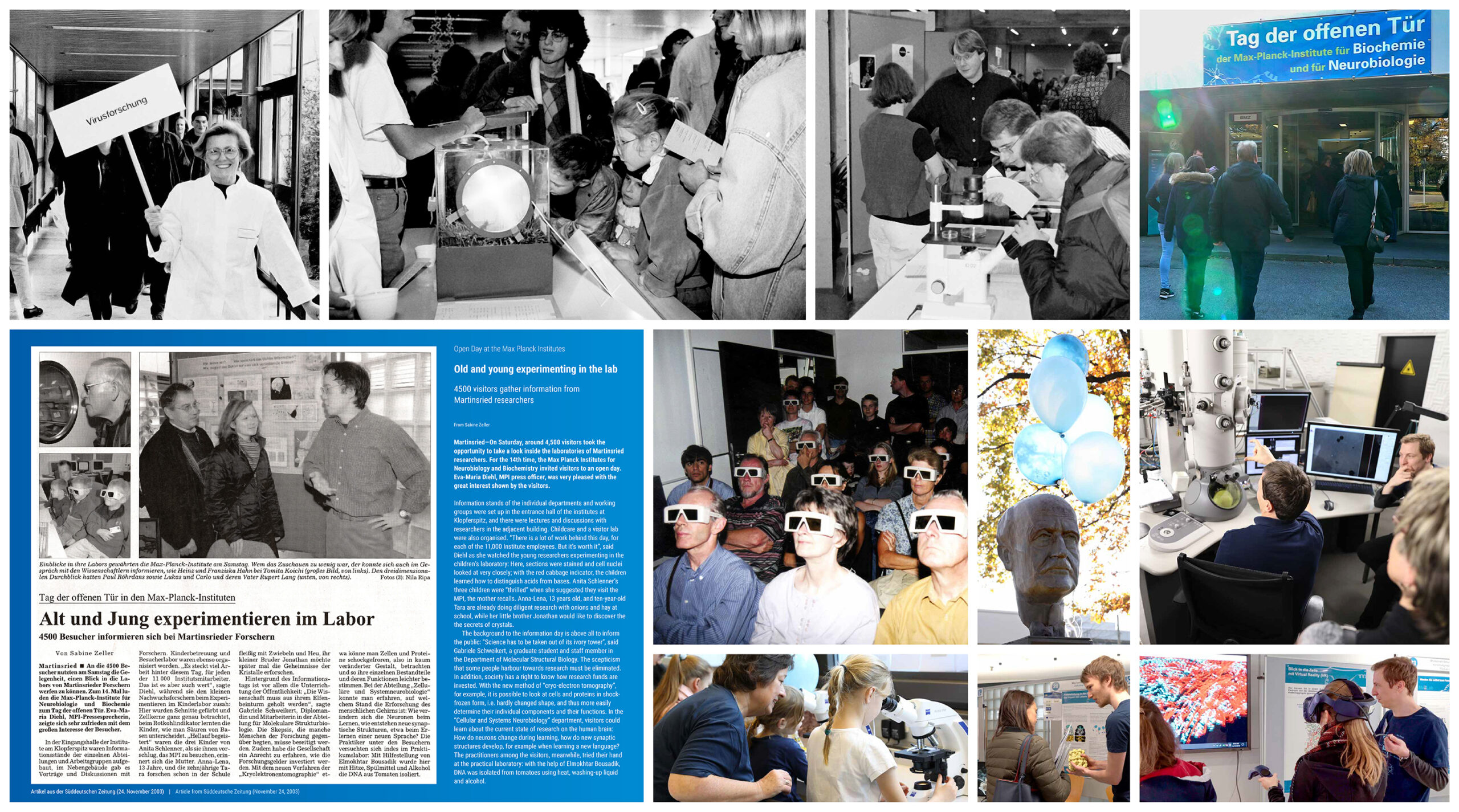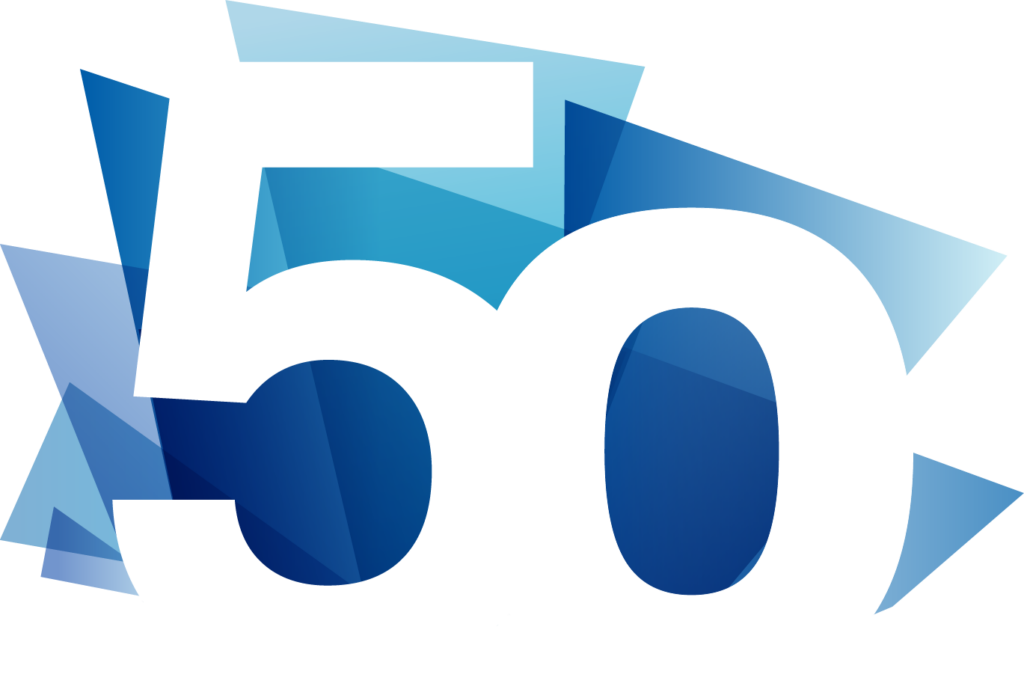6 BEHIND THE SCENES

THE COMMUNITY AT THE INSTITUTE
THE COMMUNITY AT THE INSTITUTE
Since the early years of the Institute, staff outings and internal celebrations — from the summer festival to the Christmas party — have fostered a spirit of familiarity and togetherness. At one time there was a theater group and in the last few years a choir comprised of institute employees was revived.
To provide a balance to work and have space for get togethers, a variety of sports facilities were also built on the Institute’s premises — first a soccer field, later tennis courts and a bowling alley; for a few years now there has also been a boulder wall. Many courses are still held in the sports room.
Many departments have foosball tables that invite colleagues to play a match during breaks or after work. “Sport was an incredibly invigorating and cohesive element”, said Dieter Oesterhelt, a longtime director at the institute.
THE CENTRAL FACILITIES
THE CENTRAL FACILITIES
The day-to-day running of the Institute rests on many shoulders. Since its foundation in 1973, the central facilities have guaranteed that “the store runs” — starting with the administration, the library, the technical services and the workshops.
The requirements have changed considerably over the decades. Originally, numerous scientific journals were available in print to scientists in the library. In addition, computer-assisted literature searches were already offered at that time. Digitization is shifting the focus of services from printed to digital media. There used to be a photo lab and a central drawing office, but today hardly anything is done without a computer. The Institute’s own IT department has therefore become increasingly important: it now employs 16 people—twice as many as in the late 1980s.
High-precision scientific equipment for research has been manufactured in the workshops from the very beginning. For the further development of research methods, often very special experimental equipment is required, which is not available on the market in this form.

THE OPEN DAY
The sprawling institute campus in Martinsried is traditionally open to visitors. Even the founding directors attached importance to “the campus not being an enclosed area, but open to comings and goings”, recounts a longtime employee. “People should be able to use the grounds like a park.”
The institute buildings are also regularly opened to visitors with the traditional Open Day allowing for a look behind the scenes. The response from the public has been good right from the start. “There was also publicity on the radio. And people were curious about what was being done at the Institute”, the organizer of the earlier events remembers. To this day, the Open Day, organized together with the neighboring institute, is a major event that attracts people from all over the greater Munich area.

THE OPEN DAY
The sprawling institute campus in Martinsried is traditionally open to visitors. Even the founding directors attached importance to “the campus not being an enclosed area, but open to comings and goings”, recounts a longtime employee. “People should be able to use the grounds like a park.”
The institute buildings are also regularly opened to visitors with the traditional Open Day allowing for a look behind the scenes. The response from the public has been good right from the start. “There was also publicity on the radio. And people were curious about what was being done at the Institute”, the organizer of the earlier events remembers. To this day, the Open Day, organized together with the neighboring institute, is a major event that attracts people from all over the greater Munich area.

